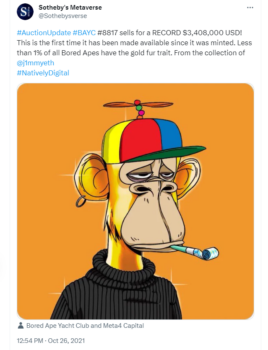Well, the NFT craze certainly crashed and burned quickly.
According to a new report by DappGambl, 95 percent of NFT collections now have zero value. That’s not a typo. Zero.
Out of over 73,000 collections, only around 3,500 still have any market cap at all. And only a tiny fraction of those are worth more than a few bucks.
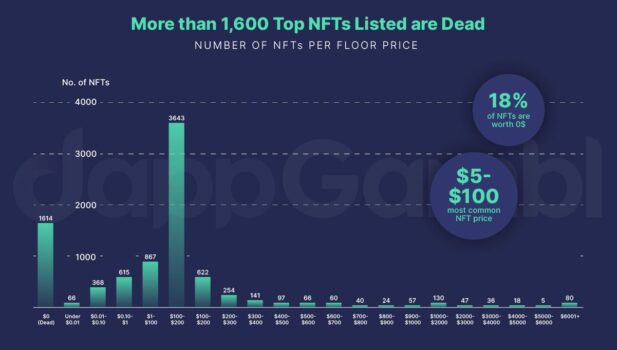
Remember when NFTs of random pixel art were selling for millions? When Jack Dorsey sold his first tweet for $2.9 million? When Melania Trump thought people would pay real money for NFTs of her eyes? When Alex Pomposelli thought people would pay for a random in-world screenshot?
Yeah, those days are long gone.
Not that, for some people, they were ever there. Of the 22 NFTs in Pomposelli’s AviTron A Metaverse World collection, none have seen any recorded purchases.
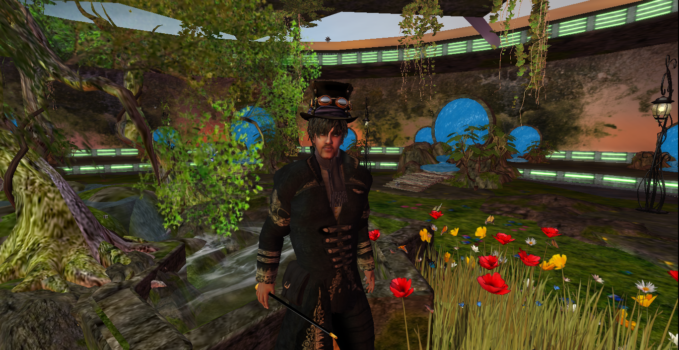
But he’s not alone.
According to the new report, 79 percent of NFT collections had no sales.
But people still spent a fortune minting them, wasting enough electricity to power 2,048 homes for a year, the Guardian calculated, and emitting as much carbon as 4,061 round-trip flights from London to New Zealand. For nothing.
I love how the report points out that a lot of these NFT collections still have insanely high list prices that are completely detached from reality. As if anyone would actually pay over $13 million for some random NFT named MacContract that has only ever sold for $18.
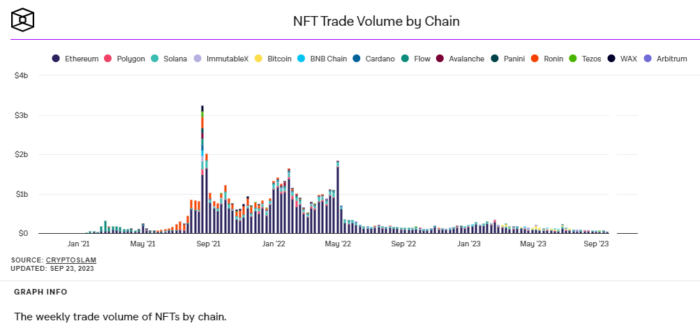
Will NFT values ever recover? Experts say they’d need historical significance like Pokémon cards, artistic merit as true artworks, or real utility.
So no, those randomly-generated cartoon apes aren’t coming back.
And neither are random snapshots of OpenSim builds.
As for utility, some say NFTs can represent virtual land or items in the metaverse. But as we’ve seen with falling VR headset sales, the metaverse hype has faded.
Plus, while the NFTs can REPRESENT virtual land or items they are not, themselves, that land or items. They are pictures of that land or items. Pictures that you can go and take for free. Or grab copies of from the NFT websites themselves. That NFT above, “A gentleman in a metaverse,” does not give you actual ownership of that avatar, his clothes, or the landscape behind him. If you want to buy land in the metaverse, you can … actually, you can’t. Anybody who’s “selling” metaverse land is not actually selling anything, just renting you some server space. You don’t really get to own that server. If you want to own a server, you can go to the server store, buy a server, buy rights to the virtual content, and put it on the server. That is the only way, legally, to actually own virtual land. If you do this, I recommend using the DreamGrid version of OpenSim, which, as a bonus, happens to be free. They buy the rights to the build from its original creator or copyright holder. Then you’ll have actual ownership. And only then.
What people are actually “selling” are bragging rights. Like those companies that claim to name a star after you or rent you a square inch of space in Scotland. You don’t actually get a star named after you. You don’t actually buy any Scottish land. You just get a piece of paper with no legal significance. And, with NFTs, you don’t even get a piece of paper.
So, for example, the guy who paid $3.4 million for this picture at a Southesby auction:
By the way, as of this writing, that NFT is selling for $37,532 on OpenSea. And you can just right-click or screenshot, and you’ve got your own copy. I just saved you $37,532. You’re welcome.
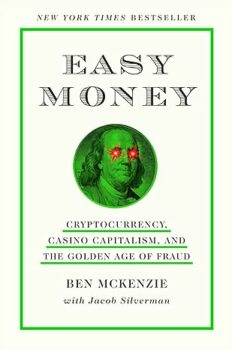 The NFTs were just another way for people to gamble online. For a great look at who profited from all these scams, check out the book Easy Money: Cryptocurrency, Casino Capitalism, and the Golden Age of Fraud by Ben McKenzie. I just finished reading it, and it’s a fun read.
The NFTs were just another way for people to gamble online. For a great look at who profited from all these scams, check out the book Easy Money: Cryptocurrency, Casino Capitalism, and the Golden Age of Fraud by Ben McKenzie. I just finished reading it, and it’s a fun read.
And, for future reference, if you want to buy something that you can’t yourself use, then don’t spend more money than you can afford to lose.
Despite his own data, Vlad Hategan, NFT Gaming Specialist at DappGambl, says that NFTs still have a place in the future.
“At DappGambl, we still maintain that once the dust has settled, we will start to see an evolution within NFTs,” he wrote, but added, “To weather market downturns and have lasting value, NFTs need to either be historically relevant (akin to first-edition Pokémon cards), true art, or provide genuine utility.”
I’m not sure how any of those things can be true. First of all, if the NFT platforms themselves will probably go away, since it costs money to keep the servers going and, the amount of money the platforms are collecting from the sales is steadily falling. At that point, the NFTs will no longer even exist, much less exist with any historical relevance. And we’ll always have the news articles for historians to look at.
As far as “true art” is concerned, I can see them being stunt art, like that Banksy painting that destroyed itself after it was bought. But there’s a limited number of buyers for self-destructing art. And, with the Banksy painting, it did have resale value — there was a piece of the painting left, plus the frame, and the shreds. With an NFT, there is literally nothing left other than the memory of its existence — and the news articles about the initial sale. Is there some value in being known as a giant idiot who blew a bunch of money on nothing? I guess… but I’m guessing that these idiots will move onto something else that they can waste money on, instead. Something fresh and hot and new. After all, there might be news value in being the first giant idiot, but nobody pays any attention to the thousandths giant idiot or the ten-thousandths idiot.
And genuine utility? Nobody’s come up with any uses for these things yet. They’re inefficient, ridiculously wasteful of resources, and astoundingly insecure. If someone steals your virtual wallet, there’s no FDIC insurance to get your money back.
I, personally, am glad that NFTs are dying a quick death. But I am a little worried about what’s going to come next.
- International singers gather on Alternate Metaverse Grid for first annual International Day - April 15, 2024
- OpenSim hits new land, user highs - April 15, 2024
- Wolf Territories rolls out speech-to-text to help the hearing impaired - April 15, 2024

